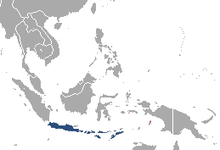
The São Tomé shrew is a white-toothed shrew about 3.0 in (7.6 cm) long found only on São Tomé Island, São Tomé and Príncipe. It is listed as a critically endangered species due to habitat loss and a restricted range. It was discovered in 1886. The population continues to decrease, making these animals rare. It is found only on São Tomé Island, a small island that is actually a shield volcano that rises out of the Atlantic Ocean.

The elongated shrew is a species of mammal in the family Soricidae. It is endemic to the island of Sulawesi in Indonesia. It lives in the forests of central, northern, and eastern Sulawesi from 200 to 2000 meters elevation.
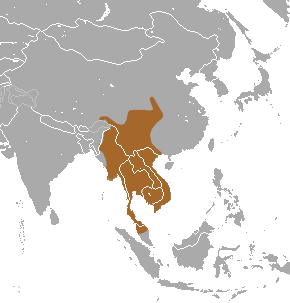
The Southeast Asian shrew is a species of mammal in the family Soricidae. It is found in Cambodia, India, China, Laos, Malaysia, Myanmar, Thailand, and Vietnam.

The Sulawesi shrew is a species of mammal in the family Soricidae. It is endemic to the central and northern provinces of Sulawesi in Indonesia. It is a fairly common species and the International Union for Conservation of Nature has assessed its conservation status as being of "least concern".

The Sulawesi tiny shrew is a species of mammal in the family Soricidae. It is endemic to the island of Sulawesi in Indonesia.
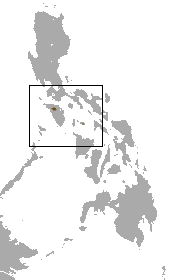
The Mindoro shrew is a species of mammal in the family Soricidae. It is endemic to the Philippines.

The Nicobar shrew or Nicobar white-tailed shrew is a critically endangered species of mammal in the family Soricidae. It is endemic to Great Nicobar Island in India.
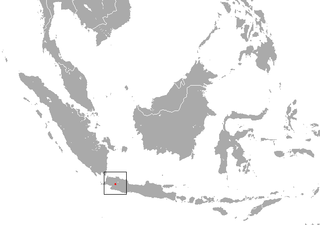
The Oriental shrew is a species of mammal in the family Soricidae. It is endemic to Indonesia.
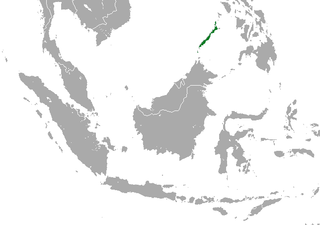
The Palawan shrew is a species of mammal in the family Soricidae. It is endemic to the Philippines and known from Palawan and Balabac Islands, from sea level to 1,300 m (4,300 ft) asl. It occurs in old growth and scrubby secondary forest.

The pale gray shrew is a species of mammal in the family Soricidae. It is endemic to Pakistan and is distributed in the Shigar valley and the western edge of Deosai.

The Ugandan lowland shrew or Moon shrew, is a species of mammal in the family Soricidae. It is found in Kenya and Uganda. Its natural habitats are subtropical or tropical swamps and montane forests.

The Sicilian shrew is a species of mammal in the family Soricidae. It is found in Sicily (Italy) and Gozo (Malta). Its natural habitat is temperate shrubland.
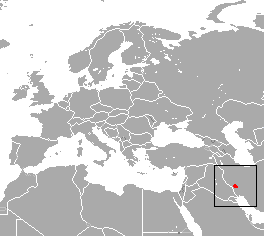
The Iranian shrew is a species of mammal in the family Soricidae. It is endemic to Iran. It is threatened by habitat loss.

The Christmas Island shrew, also known as the Christmas Island musk-shrew is an extremely rare or possibly extinct shrew from Christmas Island. It was variously placed as subspecies of the Asian gray shrew or the Southeast Asian shrew, but morphological differences and the large distance between the species indicate that it is an entirely distinct species.

The Sumatran giant shrew is a shrew of the genus Crocidura. It is native to the Indonesian island of Sumatra, where it is found both in the rainforests to the west of the island and in the hillsides in the south and east. The shrew can be found up to approximately 2,000 metres (6,600 ft) above sea level but is most common at 1,500–1,800 metres (4,900–5,900 ft) above sea level.

The voracious shrew is a common and widespread species of shrew native to China, India, Laos, Thailand, and Vietnam.

The lesser Ryukyu shrew, or Watase's shrew is a common species of shrews that is endemic to Japan. It is often found living in bushes and grasslands along the river banks and in shrubs of lower elevations.

The peninsular shrew is a species of mammal in the family Soricidae. It is found in the Malay Peninsula and Thailand. It is also found on the adjacent islands of Koh Samui, Pulau Tioman, and Pulau Mapor. This species has recently been synonymized with Crocidura malayana
The Hainan Island shrew is a species of mammal in the family Soricidae native to China and Vietnam. The IUCN has insufficient data to assess the level of population and its trend.
The Phu Hoc shrew is a species of white-toothed shrew native to the island of Phú Quốc, Vietnam. The species was first described by Abramov et al. in 2008. The species' haplogroup is most closely related to the Southeast Asian shrew and C. dracula.
